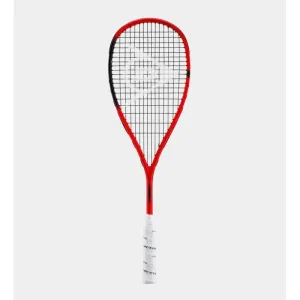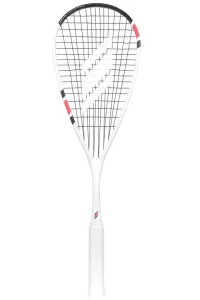Intermediate Rackets
Intermediate Squash Rackets: How to Know You’re Ready and What to Choose Next
Once you’ve played squash for a while, your first racket might start to feel like it’s holding you back.
At this stage, moving to an intermediate squash racket can make a big difference in control, shot variety, and overall feel.
How to Know You’re Ready for an Intermediate Racket
Upgrading isn’t just about time played; it’s about how your game feels. Here are the main signs:
You consistently hit the ball cleanly
If you’re finding the sweet spot most of the time, a more responsive racket will reward you.You feel your current racket is holding you back
Maybe it feels heavy, slow, or doesn’t let you generate enough power or control.You’ve started thinking about tactics and shot placement
Intermediate rackets are designed for players who want precision, not just forgiveness.Your fitness and technique are improving
A lighter or more head-light racket lets you play faster, but it’s less forgiving.
You need a bit of technique under your belt before making this jump.
Personal note:
I realized I was ready to upgrade when my beginner racket felt like a blunt tool – I could hit the ball, but I wanted more control and responsiveness to match how I was thinking about the game.
Key Factors When Choosing an Intermediate Racket
1. Weight: Going Lighter
Intermediate rackets are typically lighter (115–135g) than beginner rackets.
Lighter rackets = faster swing, better control
Slightly heavier rackets = more stability
I moved from a 140g racket to a 125g one and immediately felt how much quicker I could volley and recover.
2. Balance: Head-Light vs. Even
Head-light: Better maneuverability for volleying and quick reactions.
Even-balanced: A bit more power but still versatile.
Most intermediate players move towards head-light balance because they want to play faster.
3. Racket Shape
Teardrop: Still offers a generous sweet spot, but now you can use it for precision.
Classic: More control, smaller sweet spot – best if your technique is consistent.
I personally prefer a slightly teardrop-shaped intermediate racket because it gives a bit of both worlds.
4. Materials & Feel
As you move up, rackets use higher-quality graphite and sometimes added technologies for stiffness and vibration control.
This gives a crisp feel and more accurate shot feedback.
My Top Intermediate Squash Racket Recommendations
These are excellent rackets if you’re ready for the next step:
1. Tecnifibre Carboflex 125 X-Top
Weight: 125g
Why it’s great: Extremely popular on the pro tour. Light, fast, and powerful.
Personal experience: This was my first intermediate racket – I instantly noticed how much sharper my volleying became.

2. Dunlop Sonic Core Revelation 125
Weight: 125g
Features: Big teardrop head for forgiveness, Sonic Core tech for less vibration.
Why it works: A great transition racket because it offers control without punishing slight mishits.

3. Eye Rackets V.Lite 115 Control
Weight: 115g
Why it’s great: Very light, very fast – excellent if you’re confident in your technique and like a high-tempo style.

Tips Before Upgrading
Demo rackets if you can: Many clubs or shops allow you to test rackets.
Don’t go ultra-light too soon: If your technique isn’t consistent, a super-light racket can make mistakes worse.
String tension matters: Once you move into intermediate rackets, paying attention to your string setup becomes more important.
My Journey: Moving From Beginner to Intermediate
When I first picked up an intermediate racket, the game suddenly felt different. My shots came off the strings quicker, I could dig out the ball in tight corners, and my wrist felt less fatigued.
However, I also noticed that poor technique was punished – which in the long run made me a better player.
Final Word
If you feel your game is plateauing and you want to play faster, with more control and variety, an intermediate racket is the next step.
Choose one that suits your style, and don’t be afraid to try a few before committing.
